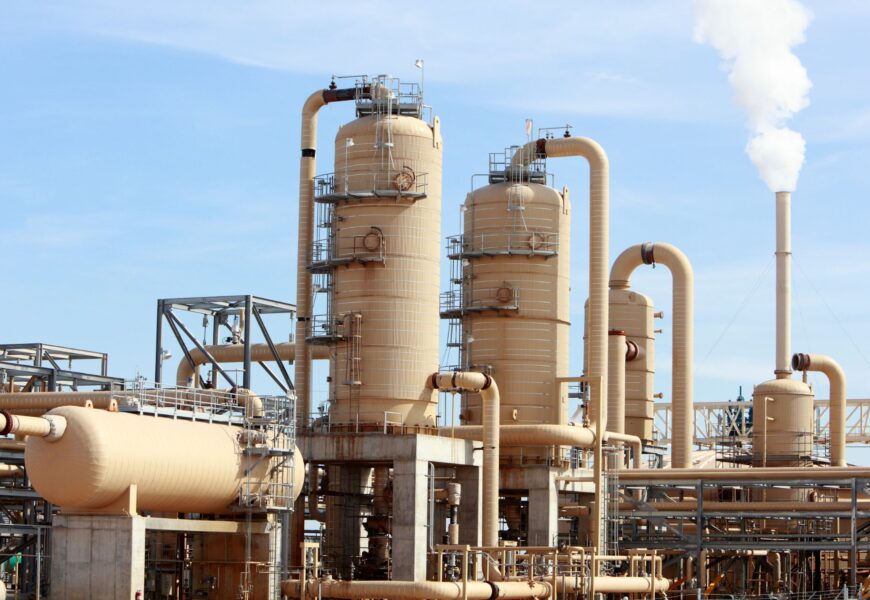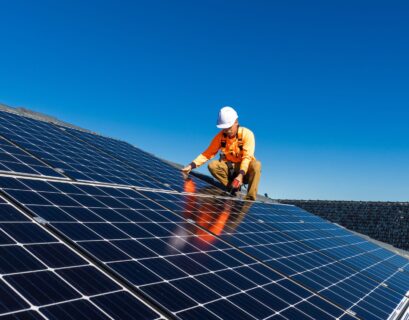As one of the most efficient and eco-friendly energy alternatives, geothermal energy is rapidly gaining attention in the realm of sustainable power. Harnessing the heat from the Earth’s interior, this energy source is helping drive the shift toward a cleaner, greener future. As global efforts to combat climate change intensify, geothermal energy provides a consistent and reliable power solution. But what makes this energy unique, and how does it contribute to renewable energy efforts?
This article aims to provide an in-depth look into geothermal energy, from its underlying principles to its real-world applications. We’ll also explore its advantages, drawbacks, and future potential, while examining how countries like Iceland and the Philippines are utilizing this resource.
1. What Exactly is Geothermal Energy?
Geothermal energy is the natural heat that emanates from the Earth’s interior. This heat is produced primarily through the slow breakdown of radioactive materials in the Earth’s core. It is stored beneath the surface in a combination of hot rocks, water, and steam. Derived from the Greek words “geo” (Earth) and “therme” (heat), geothermal energy literally refers to “Earth’s heat.”
The core of our planet can reach temperatures upwards of 9,000 degrees Fahrenheit. This immense heat offers a virtually limitless energy supply that can be used for electricity generation and various heating needs. Unlike other renewable sources like wind or solar, geothermal energy is not dependent on weather conditions, making it continuously available.

2. How is Geothermal Energy Harnessed?
Extracting geothermal energy requires tapping into underground reservoirs of hot water or steam. These are used to drive turbines, generating electricity in a highly efficient process. There are three primary types of geothermal power plants:
- Dry Steam Plants: The simplest type, dry steam plants use steam directly from geothermal reservoirs to spin turbines, which then generate electricity. Afterward, the steam is either released or injected back into the ground.
- Flash Steam Plants: These are the most widespread. Flash steam plants pull high-pressure hot water from beneath the Earth’s surface. When it reaches the surface, the pressure drops, causing the water to “flash” into steam. This steam is then used to run turbines. The remaining water is returned underground to maintain the reservoir.
- Binary Cycle Plants: In these plants, geothermal water is run through a heat exchanger, where its heat is transferred to a secondary fluid with a lower boiling point. This secondary liquid vaporizes and is used to power turbines. Binary cycle plants are versatile and can be used even in areas with lower underground temperatures.
Geothermal energy isn’t just for large-scale power production. For residential purposes, geothermal heat pumps offer an efficient method to heat and cool homes. These pumps extract heat from the ground during the winter and dissipate it back into the Earth during the summer, providing a year-round solution for temperature control.
3. Is Geothermal Energy Renewable or Nonrenewable?
Geothermal energy is considered renewable due to its continuous replenishment by the Earth’s natural processes. The heat within the Earth is sustained by radioactive decay, ensuring that it will last for millions of years. Unlike nonrenewable sources like coal or oil, which can be depleted, geothermal energy is as reliable as the Earth itself.
Additionally, geothermal energy produces very little in terms of carbon emissions when compared to conventional fossil fuel energy. This environmental advantage makes it an attractive option for countries seeking to lower their greenhouse gas outputs. By reinjecting water back into geothermal reservoirs after use, the system is maintained, ensuring that geothermal plants can continue operating for long periods without depleting the resource.
For these reasons, geothermal energy is widely classified as a renewable resource, contributing to the global effort to reduce reliance on fossil fuels and mitigate climate change.


4. Its Benefits and Drawbacks
Benefits:
- Low Emissions: It has minimal carbon emissions, making it one of the cleanest forms of power generation.
- Sustainable: Since it is naturally replenished by the Earth’s internal heat, It is a sustainable resource.
- Reliable: Unlike solar and wind energy, geothermal energy is not dependent on external factors like weather, ensuring continuous availability.
- Small Land Use: Geothermal power plants occupy less land compared to solar and wind farms, making them ideal for regions with limited space.
Drawbacks:
- High Initial Costs: The upfront expenses associated with geothermal energy projects, such as drilling and plant construction, can be prohibitive.
- Geographic Limitations: The effectiveness of geothermal energy is heavily dependent on location. The best resources are found near tectonically active regions, which may not be available in all areas.
- Seismic Risk: There is a small risk of induced seismic activity, or earthquakes, as a result of geothermal drilling and extraction processes.
5. Global Success Stories
Several countries have become leaders in its production, demonstrating the vast potential of this resource.
- Iceland is one of the most notable examples, where it accounts for the heating of nearly 90% of homes. With its abundant volcanic activity, Iceland has access to large amounts of geothermal resources, which also generate around 25% of its electricity.
- The Philippines is another geothermal energy powerhouse. The country generates over 10% of its electricity from geothermal sources, thanks to its location on the Pacific Ring of Fire, an area known for its geothermal activity.
Other nations such as the United States, New Zealand, and Italy have also significantly expanded their geothermal energy capacities, driven by advances in technology and efficiency. As drilling and plant technology continue to evolve,it is expected to become an even larger part of the global energy mix.

6. Geothermal Energy in Residential Use: Pros and Cons
Advantages:
- High Efficiency: Geothermal heat pumps are incredibly efficient at regulating the temperature of homes, offering substantial energy savings compared to traditional systems.
- Long-Term Savings: Although the installation costs are higher, homeowners typically see a return on investment through lower energy bills over the long term.
Disadvantages:
- Costly Installation: The initial expense of installing geothermal heat pumps, which includes the cost of drilling, can be prohibitive for many homeowners.
- Geographical Dependency: Not all regions are suitable for geothermal systems, as they depend on specific underground conditions to operate efficiently.
7. Its Future
With ongoing advancements in geothermal technology, the future looks bright for this renewable resource. New drilling techniques, such as enhanced geothermal systems (EGS), allow energy extraction from deeper and previously inaccessible areas. Combining geothermal with other renewable resources like solar and wind could also help stabilize energy grids and reduce overall carbon footprints.
It is expected to play a crucial role in helping the world meet its carbon reduction goals. By providing a reliable and consistent source of power, it can help countries reduce their reliance on fossil fuels. To know more on gerotheraml energy visit crypto green force. As more nations prioritize clean energy, geothermal is poised to become a key player in the global energy landscape.

FAQs
Q1: How is It generated?
It is created by tapping into underground heat sources, such as steam or hot water, which are then used to drive turbines and generate electricity.
Q2: Is It renewable?
Yes, It is renewable because it is sustained by the Earth’s natural processes and will not run out over human timescales.
Q3: Can It be used in homes?
Yes, geothermal heat pumps can be installed in homes to provide energy-efficient heating and cooling.
Q4: What are the environmental impacts of geothermal energy?
It has low environmental impact, producing very little in terms of emissions. However, it can potentially lead to minor seismic activity and requires careful management of underground resources.




















